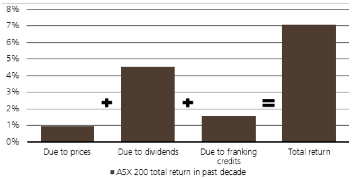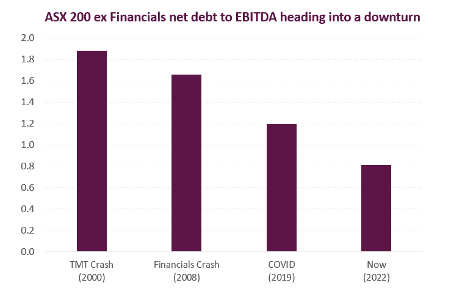Do CSL and Mineral Resources still deserve “market darling” status?
Diversification is often referred to as “the only free lunch in finance”. But the lunch may not be worth eating if junk food makes up most of the menu.
Finding high conviction companies is hard – and if you set high hurdles for investment, not many companies will fit the bill. Even more so when the economic outlook is uncertain and balance sheets are under pressure.
It’s thus no surprise that most of the world’s top investors pass on the free lunch. Berkshire Hathaway’s Warren Buffett, for instance, once called diversification a “protection against ignorance”.
“The benefit is not diluting your good ideas with inferior investments,” says Emma Fisher, portfolio manager of the Airlie Australian Share Fund (ASX: AASF).
“It’s pretty rare that a potential investment is a “tick” on balance sheet, business quality, management quality and valuation, so when we find one that is, we want to own a decent position in it.”
In this Q&A, Emma runs us through Airlie’s process, and how it arrives at a concentrated portfolio of around 30 stocks.
She also makes a bull case for CSL and Mineral Resources, two of the ASX’s market darlings that Airlie continues to hold in the portfolio.
About the Airlie Australian Share Fund
Name of the fund and ASX ticker: Airlie Australian Share Fund (ASX: AASF)
Asset Class: Australian Equities
Date listed: 2021
Fund size: $350 million
Description of strategy: The fund holds a concentrated basket of 15-35 Australian listed companies, with a focus on balance sheets, management and business quality and valuation.
Investment objective: To provide long-term capital growth and regular income through investment in Australian equities.
What role does the fund play in a portfolio: We view the fund as a core holding in a portfolio, allowing concentrated exposure to quality Australian companies with good balance sheets.

Balance sheet, balance sheet, balance sheet
The fund is concentrated, typically with around 30 ideas, and suits an investor who wants exposure to quality Australian companies, with a conservative approach to balance sheets and valuation.
“It sounds a bit boring, however our experience in investing has taught us that the path to long-term wealth creation in Australian equities involves paying attention to balance sheets, returns and good management.”
Airlie start with the balance sheet. While this is treated as a Go/No-Go decision, balance sheets are approaches on a sector by sector basis. A healthy balance sheet in one sector may not be a healthy balance sheet in another.
“For example, for a business with high operating leverage like a retailer, we basically want to see a net cash position,” says Fisher.
“We can accept a bit more debt in a business with more defensive cashflows, like CSL or a supermarket.”
Once Airlie are comfortable with the balance sheet, they then weigh quality of the business and management team against the valuation: “looking for situations where the quality is undervalued.”
Income payers
Having satisfied balance sheet, quality and valuation criteria, the types of businesses Airlie like tend to be decent dividend payers.
“It’s something we pay attention to, as the chart below shows, 87% of the total shareholder return investors have enjoyed over the last decade in investing in the Aussie market has come from dividends and franking credits.
AASF target a 4% annual dividend distribution.
“Obviously, we want and expect capital growth from our investments as well. Here the focus on quality helps, we are looking for businesses that can earn above-average returns on their capital.”

All things being equal, a concentrated portfolio does carry a higher level of risk. For AASF, those risks boil down to poor balance sheets and expensive starting valuations.
“We try to manage those risks via our process which considers balance sheets and valuations in stock selection. From a top-down perspective, we try to avoid tilting the portfolio too aggressively in one direction (in case we’re wrong).”
But diversification isn’t just an aggregate numbers game. So while the AASF portfolio is concentrated, it is still diversified.
“We like to see a nice, broad diversification of ideas across geographies, business models,” says Fisher.
“One example is the Australian consumer: it’s amazing how many separate ASX sectors house businesses that are effectively B2C business models selling to the Aussie consumer: retailers are obvious, but it includes banks, gaming, building materials, shopping centres, travel stocks.”
Pricing power may have saved the Aussie market, but for how long?
As financial conditions have tightened, the Aussie market has remained remarkably resilient.
“If you’d told me two years ago the cash rate would have a 3-handle, I would have found it difficult to believe that the ASX200 would be basically flat over that time,” notes Fisher.
“Obviously, that flat overall performance belies some significant sector dispersions: the more rate-sensitive sectors like REITs and retail have copped it in the neck.”
Some of this resilience can be attributed to pricing power.
“Nearly all businesses have turned out to have “pricing power” in this inflationary environment! That’s why the market has held up so well, companies have pretty much uniformly passed on pricing pressures to the end consumer.”

Source: MST Marquee. As at 31 Dec 2022.
Consumer discretionary and REITs are two sectors that have been dramatically repriced as inflation has increased. But they have very different balance sheet situations.
“A lot of retailers generated a phenomenal amount of cash in the COVID years of free money and closed borders, and most have let that accrue to their balance sheets. An example we own is Premier Investments (ASX: PMV), with $400m net cash on balance sheet: this should stand them in decent stead in a slowdown that will hit their earnings.”
This stands in stark contrast to REITs, where gearing is historically high.
“We are more comfortably adding to bombed-out retailer positions that bombed-out REITs.
Looking forward, Fisher’s outlook expectations remain tempered, with two concerns front of mind: earnings and valuations.
“Earnings still look too high for this late in the tightening cycle, and the market looks very poor value relative to the return on offer in other asset classes, including risk-free asset classes.”
“I think investors will (and should) start asking themselves why they own Telstra for a 4% dividend yield, when they can get that in a term deposit? To me that suggests the market needs to reprice down, particularly the no-growth, defensive end of the market.”
Are CSL and Mineral Resources still market darlings?
CSL Limited (ASX: CSL) and Mineral Resources (ASX: MIN) have star status on the ASX. Well deserved, considering they’ve both returned over 6000% since listing.
But CSL’s price has range traded between $250-$350 for the past three years, while Mineral Resources has suffered from a falling lithium price.
Airlie remain bullish and overweight on both stocks.
Fisher believes CSL’s share price plateaued due to two things weighing on returns.
First, plasma collection costs skyrocketed due to the COVID-19 pandemic. The second factor has been the $18.8 billion purchase of Swiss renal therapy and iron deficiency products business Vifor.
“Donor fees are now falling, and collections are improving, so you should see a path back towards prior profitability over the next few years.”
It’s also taking market share as its closest competitor gives it up.
“Plasma is effectively a 3-player market, and the number two player Grifols has too much debt (ND/EBITDA >8x),” says Fisher.
“As a result, rather than investing in its plasma business, [Grifols] is reducing headcount and closing centres. In an industry where demand grows 6-8% p.a., we think CSL can grow at double this rate to fill the void of Grifols not expanding.”
Turning to Mineral Resources, Fisher reckons the value of the business will be determined by how much cash they generate between now and 2030, “which will depend on where lithium prices average over that period.”
While demand signals are weak, they are short term.
The supply side is where things get interesting for Fisher.
“Any time we hear from a producer, they are delaying production and upgrading capex assumptions. These assets aren’t easy. I think it’s a decent bet that supply takes longer to come online than people expect, and costs more.”
This puts Mineral Resources in a good position, given their assets are low on the cost curve. In this scenario, Mineral Resources looks like good value to Fisher
“I’ve got no idea if the next short-term leg in the lithium price is up or down, that shouldn’t matter too much in the long run - I think they’re going to generate a tonne of cash over the next decade.”
Learn more
Airlie seeks to identify Australian companies based on their financial strength, attractive durable business characteristics and the quality of their management teams.

2 topics
4 stocks mentioned
1 fund mentioned
1 contributor mentioned


